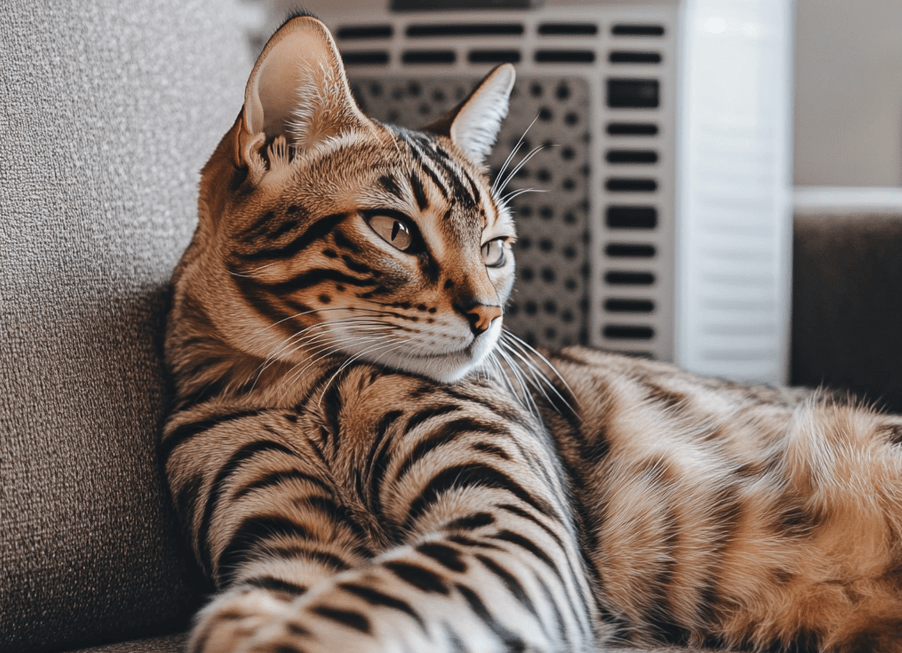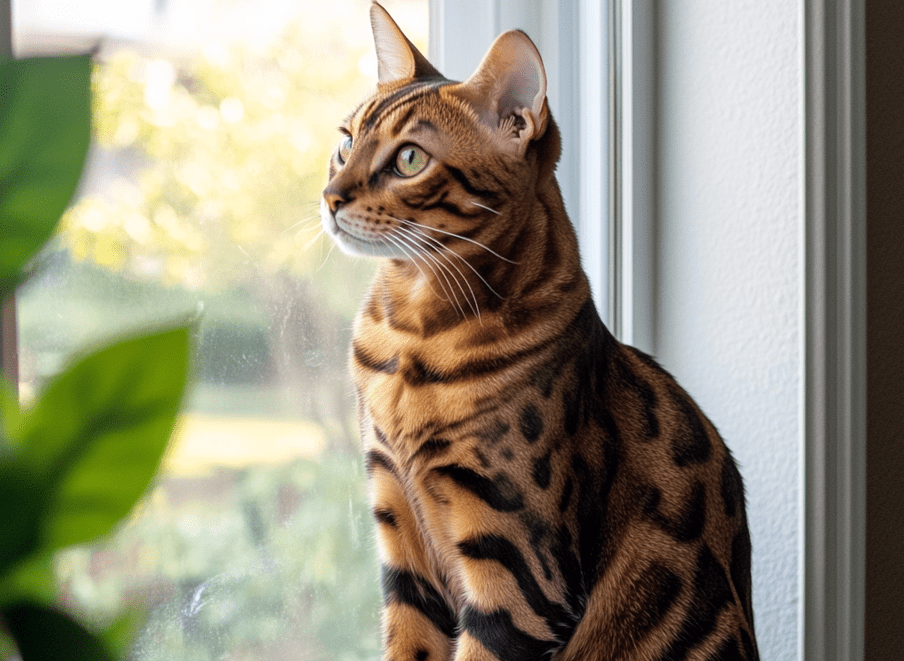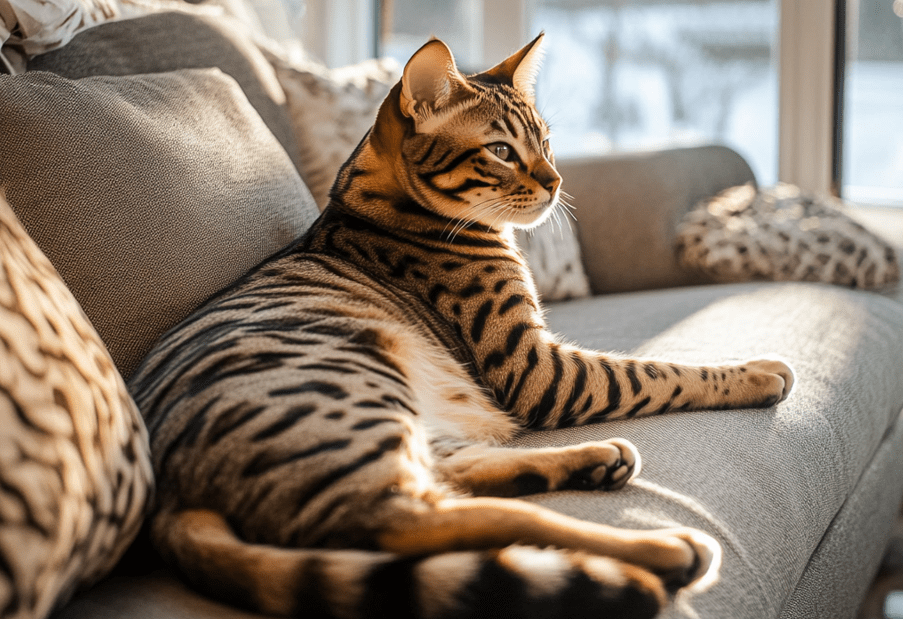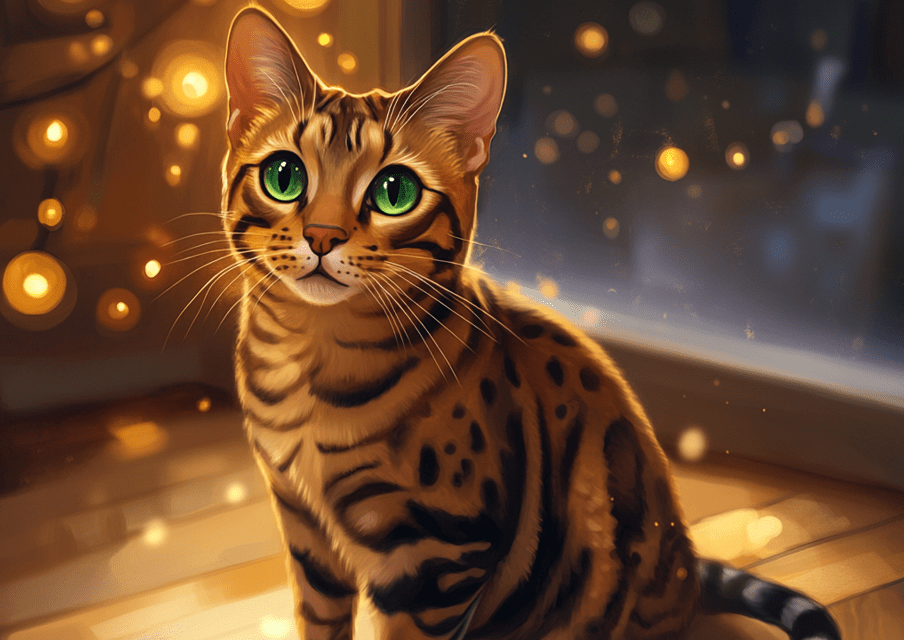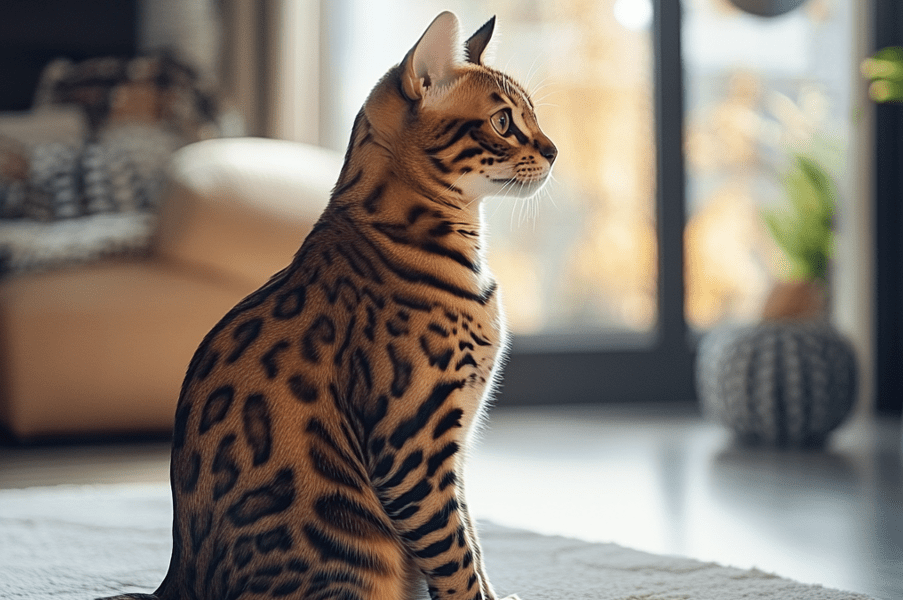
Bengal cats are beautiful, smart, and have a wild look. Because of their unique coat patterns and playful personality, this hybrid breed is becoming more popular. Most Bengals are about the same size as a large house cat. Bengal cats were bred by crossing Asian leopard cats (Felis bengalensis) with domestic cats such as the Abyssinian, Egyptian Mau, and American Shorthair. Learn more about this gorgeous feline in our Bengal Cat Breed Profile, including its unique characteristics and personality. Continue reading for detail information about Bengal cats.
Breed Summary
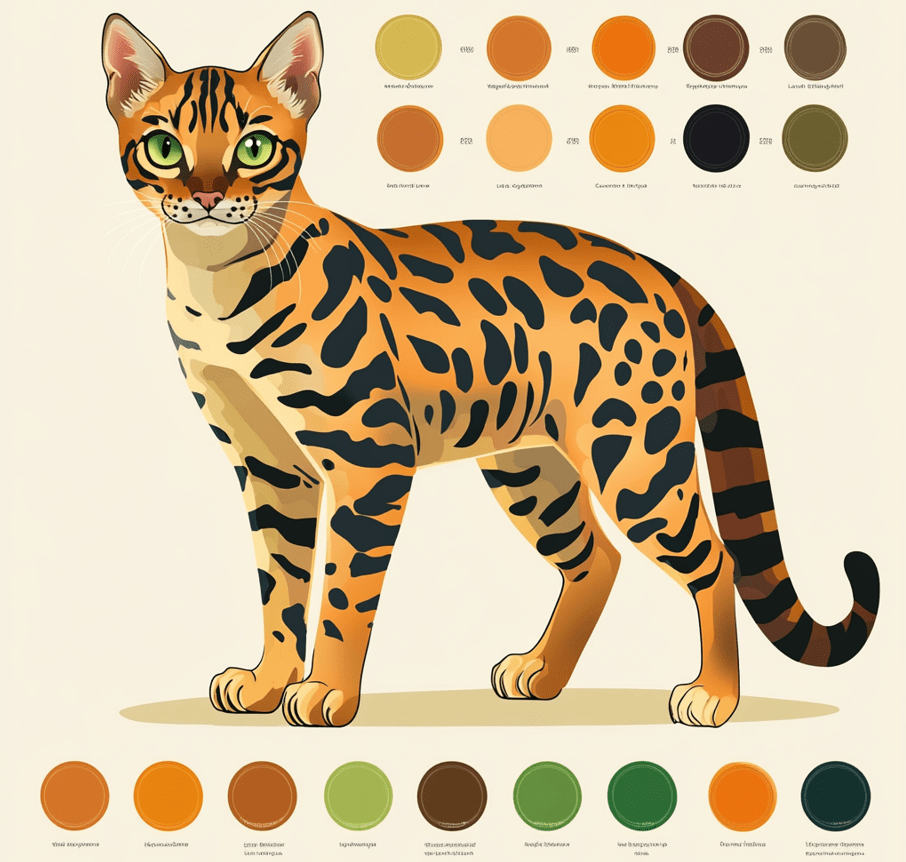
Temperament: Affectionate, energetic and expressive
Weight: Generally 12 pounds on average, with a maximum of 20 pounds
Length: May reach 18 inches long
Coat Type: Short or long hair varieties
Coat colors: Brown tabby, seal sepia tabby, seal mink tabby, seal lynx point, black silver tabby, seal silver sepia tabby, seal silver mink tabby, seal silver lynx point
Coat Patterns: Spotted or marbled designs
Color: Shades of green or gold
Lifespan: 15 years or above
Hypoallergenic: No
Origin: United States
Characteristics of Bengal Cats
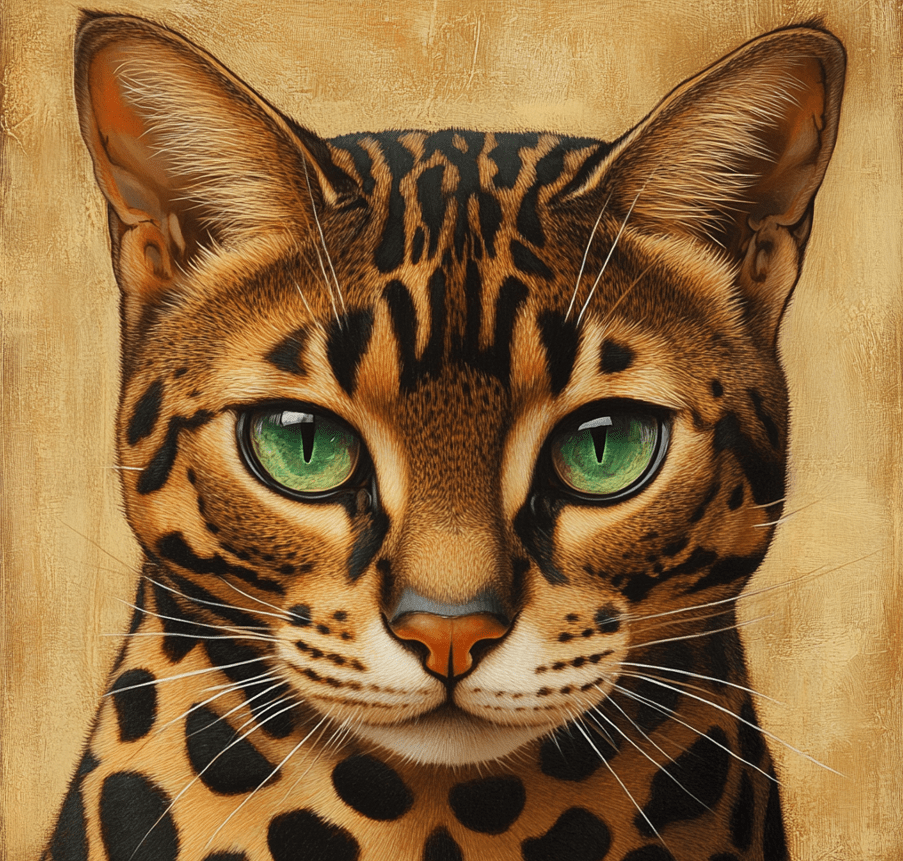
Size and Build: Bengal cats typically weigh between 6 to 12 pounds (female) and 9 to 15 pounds (male) in average. Bengals are full grown by two years of age, so it’s essential to enjoy the kitten stage.
Coat and Fur: One of the most distinctive features about the Bengal cat is its coat. Its markings resemble that of a leopard or jaguar, giving it an unusual appearance compared to other house cats. The coat may feature bold spots known as rosettes or swirl marble-like patterns. It is soft and thick, wild-looking and a smooth-feeling one. Some Bengals have long hair (known as Cashmere Bengals), but this type is not recognized as a separate breed internationally.
Lifespan: A Bengal cat usually lives for between 12 and 16 years, but many factors such as genetics, diet, and living conditions can impact the lifespan.
Personality and Behavior: Bengal cats have an extremely confident, outgoing personality. These animals are very social and are happiest when they are kept in a home with companions and plenty of toys.
Temperament: Athletic and energetic, Bengals are more active than a lot of other breeds. Active and athletic, Bengals tend to be more energetic than a lot of other breeds. They love brain games, mental challenges and highly stimulating activities, but enjoy affection and cuddles as well.
Caring for Bengal Cats
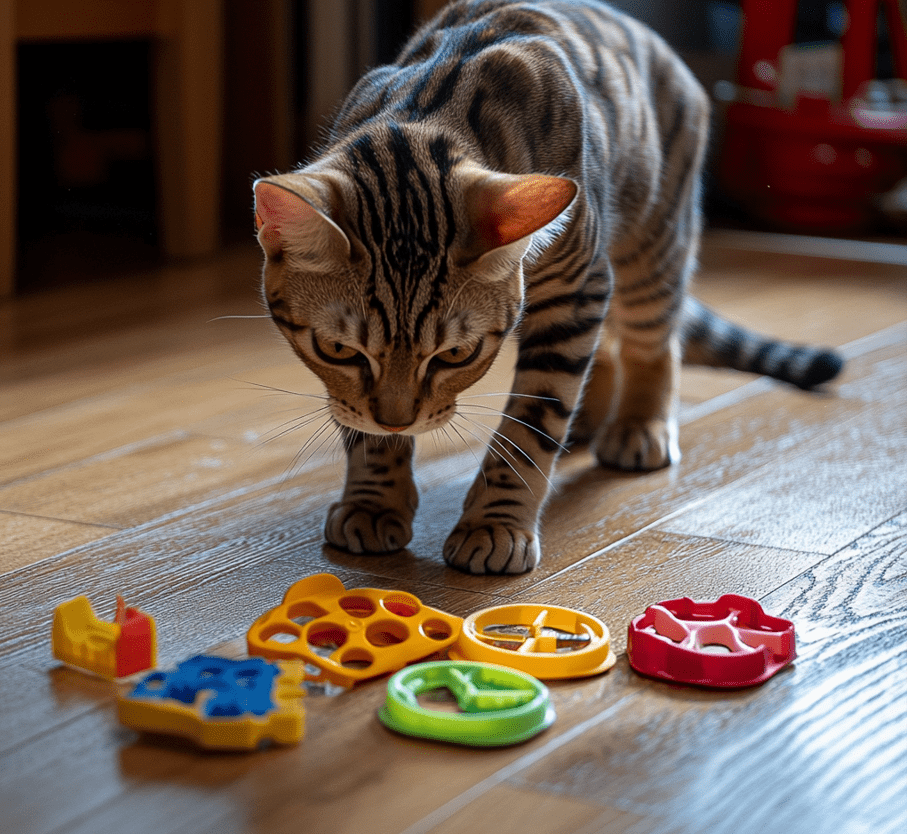
Coat Care: Bengal cats are well known for their beautiful coats, but they require very little grooming needs. Like most cats, they don’t need excessive coat care. Bengals have a short coat that only requires occasional brushing, usually in the spring when they shed their winter coat. Conversely, long-haired Bengal cats demand extra care, such as daily brushing and combing to avoid mats and to minimize dead hair.
Tooth & Nail Care: Cats need to maintain healthy teeth, as dental disease is common. Ideally, you should brush your Bengal’s teeth on a daily basis with a special cat toothbrush and toothpaste. If they really don’t like brushing, dental chews, treats or mouth rinses can help clean their teeth. Bengals should get their nails trimmed once a month as well. You can have a veterinarian or a groomer do it, or you can try trimming them yourself.
Feeding and Nutrition: Noted to be sometimes picky eaters. Bengals require balanced food to keep them healthy. They will get all vital nutrients from high-quality commercial cat food. How much you give them depends on the size of your cat and how active they are. Always ensure they have access to fresh water. Different felines have different preferences; some thrive on two meals a day and some prefer their food to be available every time. If free-feeding, offer them only dry food, since wet food can attract pests if left out too long. Dry food is less expensive and last forever, but wet food is tastier with more moisture than cats appreciate. Your Bengal’s dietary needs may change as they get older; it’s a good idea to consult your vet on the best food for your pet. Keep in mind that treats should represent no more than 10% of their daily calories.
Activity Requirements: Bengals are very active cats. They enjoy running, climbing, jumping, and exploring. Some cats are solo artists, but Bengals are social cats who thrive on activities with their humans or fellow pets such as playing fetch or learning new tricks.
Parasite Prevention: While your Bengal cat may stay inside, they may still obtain fleas, ticks and heartworms as well. Moreover, fleas and ticks are simple to keep prevented with the proper treatment, so talk to your vet about which is most suitable on your cat. Heartworm, which is transmitted via mosquito bite and can be fatal to cats, however, is far less common than in dogs. Cats don’t have a simple treatment for heartworms, so be sure to discuss prevention and routine testing with your vet.
Outdoor Limitations: While Bengal cats may have a wild appearance, they should not be allowed to roam freely outdoors. Outdoor cats can contract diseases or parasites or be injured. They also can be harmful to local wildlife. But their natural curiosity can be satisfied with interactive toys, puzzle feeders and safe space to explore indoors. If you’re going to take them outside, do so safely with a leash, collar, or a cat fence.
Veterinary Visits: In the first few months of life, Bengal kittens require numerous trips to the vet for vaccinations and health checks. Then they need an annual examination. Older Bengals should go to the vet a minimum of twice a year to identify health concerns early and check for indications of aging.
Living Needs
One of the most defining characteristics of the Bengal cat personality is that they are happiest when they can be near their owners. It doesn’t matter to them if you live in a big house or little apartment as long as their family is close to them. Bengals require a lot of stuff to do and places to climb, regardless of the size of the home.
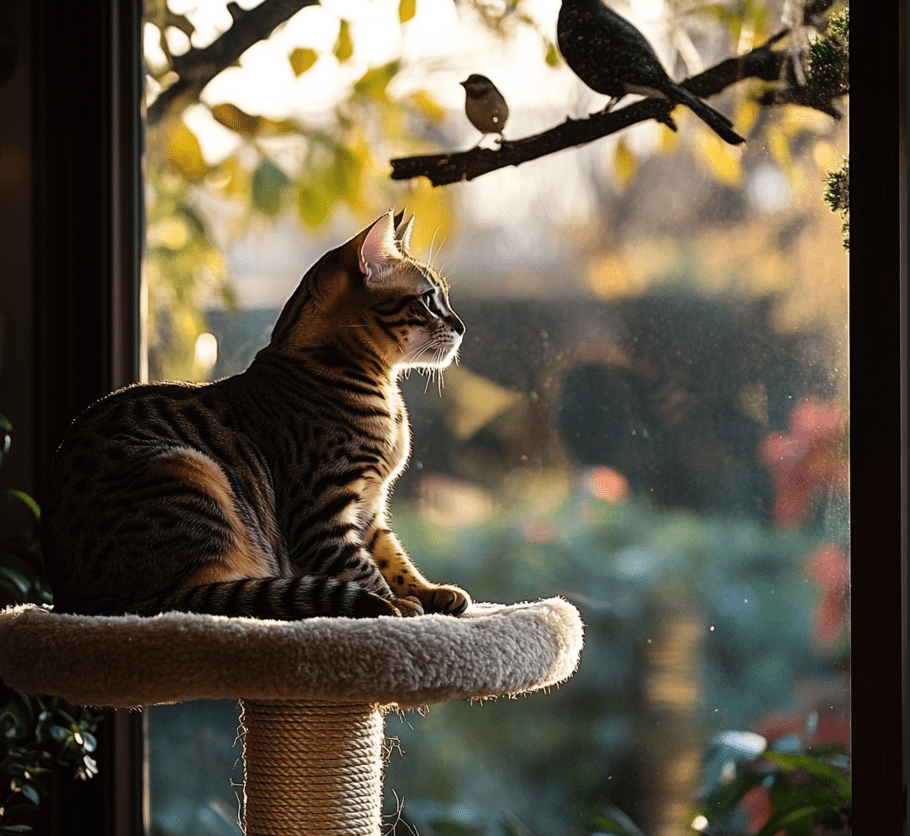
Give your Bengal a good cat tree (at least one, you should have a couple of strong cat trees for your cat) and plenty of toys to keep them busy when you’re not in your home. If you spend long hours away from your home, adding another cat can provide your Bengal with companionship and thus eliminate boredom from their life.
Since Bengals have a strong hunting instinct they are also very fond of watching the birds, squirrels and other animals outside the window. Soft, carpeted window perches are now available, giving your cats a comfortable place to enjoy the scenery.
You should avoid putting breakable things on shelves or mantels where your Bengal has access. You should know that this breed is very agile and will probably explore every high place in your home. Some things are valuable or fragile, and should be stored safely out of reach. Cat shelves can also provide a safe space for your Bengal to climb and play.
Bengals are very playful but they will gladly curl up on your lap for a nap after a long day at play.
Bengal Cat Health Problems
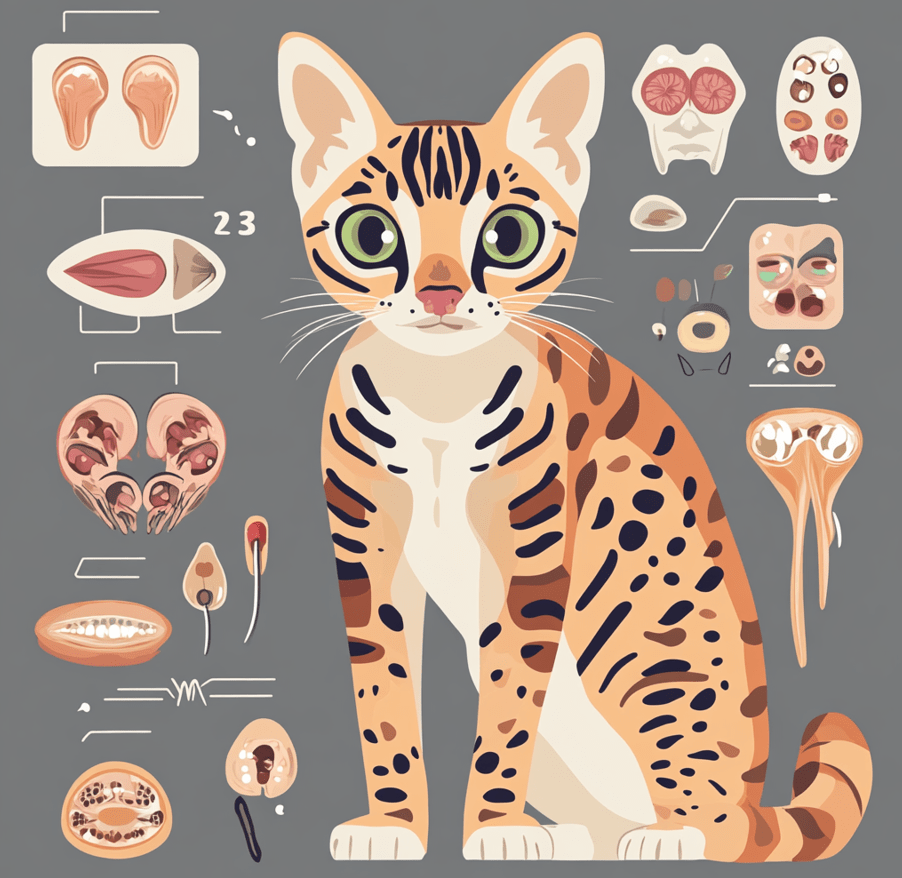
Hypertrophic Cardiomyopathy (HCM):
Hypertrophic cardiomyopathy (HCM) is the most common heart disease seen in cats. It leads to thickening of the walls of the heart, which makes it more difficult for the heart to function properly. HCM is typically hereditary and can occur at any age.
Serious signs of HCM include Tiredness, Trouble in Breathing, Breathing through mouth. No cure exists, but medicines can help control symptoms, slow the heart rate and reduce fluid buildup.
Progressive Retinal Atrophy (PRA):
PRA affects the retina, the light-sensitive tissue at the back of the eye, and slowly dries it out, eventually leading to vision problems. It usually begins later in life, initially impacting night vision. PRA-affected cats may run into things in the dark, act jumpy at night or avoid dark areas. Their eyes may reflect more light, and their pupils may appear larger.
Unfortunately PRA frequently causes blindness after one to two years, and there is no means to prevent or cure it at present.
Erythrocyte Pyruvate Kinase Deficiency (PK Deficiency)
PK deficiency is a hereditary disease affecting blood, leading to anemia (not enough healthy red blood cells). It can present at different ages and in different forms. Symptoms include lethargy, weakness, weight loss, and a distended abdomen.
There’s no cure or treatment for PK deficiency, but breeders can use genetic tests to avoid passing it on to kittens.
Feline Dental Disease:
Over 50% of cats over four years of age have some form of dental disease. The majority of dental issues are not only preventable but also treatable. One of the most common signs is lack of appetite. Other signs include bad breath, drooling or reluctance to eat.
The most common dental diseases seen in cats are:
Gingivitis: Swollen, red gums
Periodontitis: Advanced gum disease that can destroy teeth and bones
Tooth Resorption: the breakdown of tooth structure
You can reduce the risk of dental disease in your cat by brushing the teeth, and getting regular vet checkups. Professional cleanings can cure gum diseases, but tooth removal may be necessary in advanced cases or in case of tooth resorption.
Other Factors to Consider for Bengal Cats
Compatibility with Other Animals: Bengal cats are almost always very adaptable to living with other pets within your home when properly introduced.
Family Friendliness: These remarkable cats can be incredible family companions. They do well with kids and often become their energetic playmates.
Allergy Concerns: Cat allergens are primarily found in their saliva and dander, and they are typically responsible for causing allergy in humans. Bengal cats are less prone to allergies, which can also cause allergy in some sensitive people.
History of Bengal Cats
Bengals are hybrids, bred from domestic cats and Asian leopard cats and exotic small wild feline species, providing multiple unique traits to the breed.
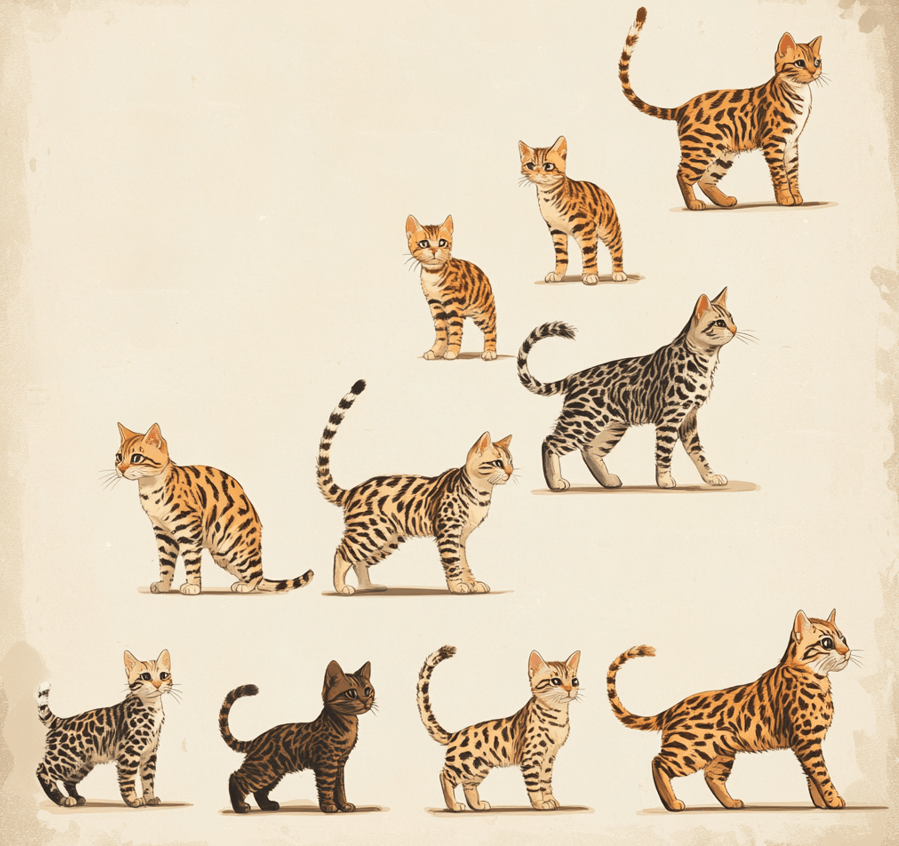
While people were talking about Bengal-like cats as far back as the late 1800s, serious attempts to breed them didn’t begin until the 1960s. Jean Mill, a cat breeder, sought to breed a cat that resembled a wild bred cat with the temperament of a friendly house pet.
Bengal cats are sometimes bred with other cat breeds today in an effort to create new hybrids, for example the Serengeti cat (which resembles a wild serval), the Toyger (with tiger-like stripes) and the Cheetoh (with a spotted cheetah-like pattern).

